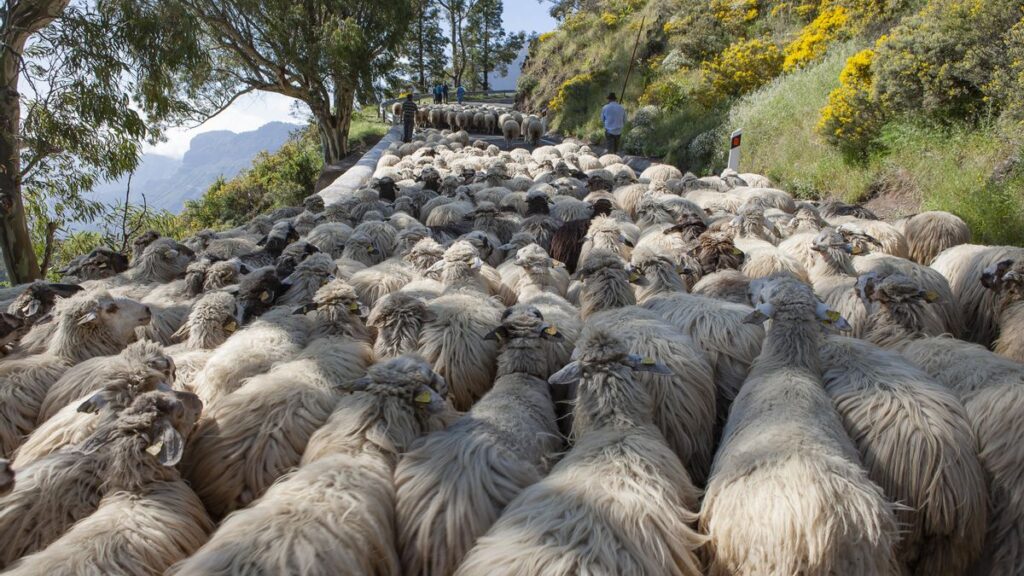What is a UNESCO Biosphere Reserve?
A UNESCO Biosphere Reserve is a designation for territories that excel in three core functions: conserving biodiversity and ecosystems, fostering development for local populations, and providing logistical support for research, education, and communication. It’s a recognition of a place’s commitment to balancing human activity with environmental protection.
The vast reach of Gran Canaria’s protected landscape
On Gran Canaria, this prestigious status covers a remarkable 42% of the island’s land—nearly half—plus a significant marine strip running from the point of Maspalomas (excluding the immediate coastline) to the port of Mogán. This designation acts as an invisible shield, a safeguard whose continuity depends largely on the islanders themselves acting as guardians of the delicate equilibrium between landscape, culture, and species diversity.
Understanding the three zones of protection
To understand how the Biosphere Reserve functions, it helps to think of it in three concentric rings of protection. The first is the core zone, an area of the most intense protection dedicated to maximum safeguarding. In Gran Canaria, this includes the Integral Natural Reserve of Inagua and the Special Natural Reserve of Güigüi.
Surrounding this is the buffer zone, which permits activities compatible with conservation, such as sustainable tourism or scientific research. This zone comprises the Nublo Rural Park, the Tamadaba Natural Park, the Pilancones Natural Park, and a small 500-meter strip around the terrestrial core of Güigüi.
The third area is the transition zone, where sustainable economic and human activities are developed to benefit both the local community and the environment. This zone includes the municipalities of San Bartolomé de Tirajana, Mogán, Artenara, San Mateo, Valle de la Aldea de San Nicolás, and part of the municipality of Agaete.
More than just nature: The human element
For Pilar Pérez Suárez, a biologist and manager of the Gran Canaria Biosphere Reserve, the “why” behind this designation goes beyond safeguarding natural heritage and habitats. As she explains, it also encompasses “that interaction of human beings over, in our case, more than 1,500 to 2,000 years with the territory, which has left marks of identity in almost every corner.”
Indeed, there is one species that must be present in Biosphere Reserves around the world: humans. “If there were no people, a Biosphere Reserve could not exist; it would be a different designation altogether,” states Pérez. “It is the people who inhabit it, transform it, and leave a positive footprint, so to speak—that is the key factor.”
A positive impact, not a set of prohibitions
After 20 years of managing this UNESCO designation, the biologist emphasizes that the Biosphere Reserve “does not prohibit doing things.” It doesn’t affect any resident’s daily life through new regulations, but it does have positive repercussions. “A Biosphere Reserve like ours, or in general across Spain, either doesn’t affect you or affects you positively. Because, in the end, it is a territory recognized worldwide. Suddenly, there’s a map where a little piece of Gran Canaria appears, alongside more than 700 others in the world.”
A living tradition: The example of transhumance
The Biosphere Reserve’s effort to harmonize landscape and local tradition finds a clear example in the practice of transhumance. This ancient system of moving livestock between seasonal pastures represents a gradual human interaction with the environment, leaving the lightest and most respectful footprint possible on the ecosystems it inhabits.
“Therefore,” continues Pérez, “it is not a figure of the past, like a World Heritage Site—for example, the Alhambra in Granada. Instead, Biosphere Reserves look to the future.”
The role of a “connecting agent”
Pilar Pérez likes to describe her management role as that of a “connecting agent,” an expression borrowed from a colleague in another reserve. “The pieces are already in the territory,” she says, “and a Biosphere Reserve manager tries to connect those pieces within their possibilities to create projects and more holistic approaches to intervention.”
This management encompasses creating environmental education and sustainable development projects, like the eco-schools program that reaches all educational centers. It also includes physical interventions, such as improvement works or environmental rehabilitation.
Fostering knowledge and community
Among its many tasks, the reserve carries out outreach activities like the ‘Encounters of Knowledge from Coast to Summit’ project. Here, experts in a specific field, such as wool production, gather in a circle to exchange knowledge. “We have participatory bodies and scientific councils. We give grants to non-profit entities that can develop activities to enhance the value of these two elements. We are at the highest point of management, from my point of view,” Pérez affirms.
Future challenges and global pressures
Asked about the challenges the Gran Canaria Biosphere Reserve faces to renew its UNESCO recognition in ten years, its manager points to two main lines of action. The first is inherent to management itself: “that the Island Council (Cabildo), the main institution promoting this designation, continues with this commitment, bets on it, and understands it.”
The second involves local entities, associations, collectives, residents, and visitors. “It is our job to make them understand that they are in a privileged space that has certain limitations.” For Pérez Suárez, getting this message across is a difficult challenge in a globalized world with open borders and constant flows of people from Europe and beyond.
“So, it is complex to control those flows, which can have a real impact, such as the gentrification and ‘touristification’ of spaces and specific areas,” she warns. A Biosphere Reserve doesn’t transform a territory overnight. It isn’t a designation that will single-handedly save a territory, but it certainly helps and steers it toward a better future.


